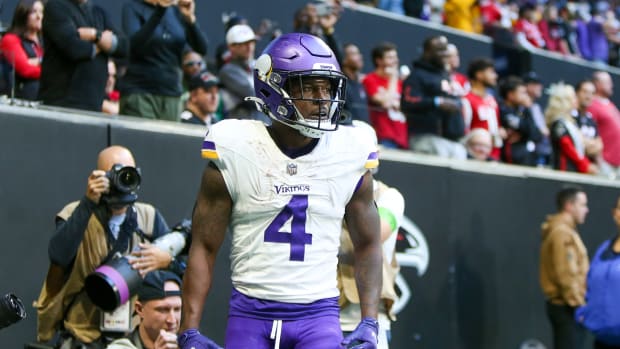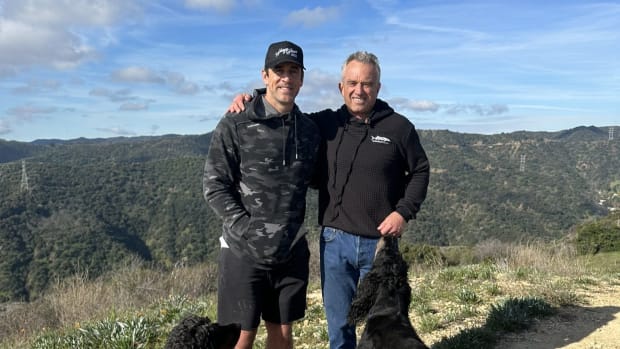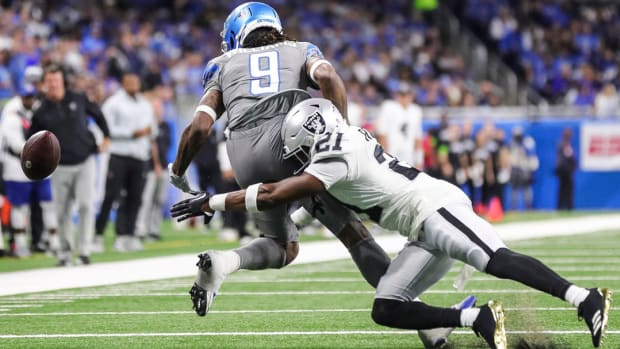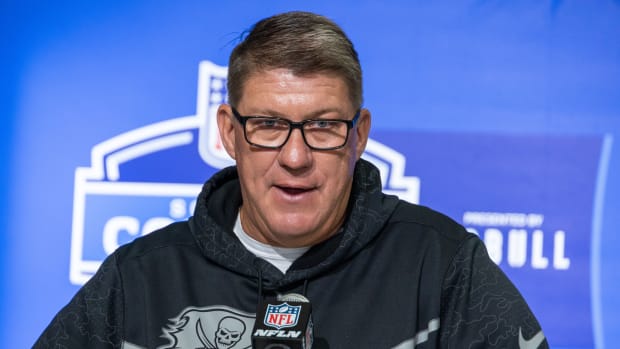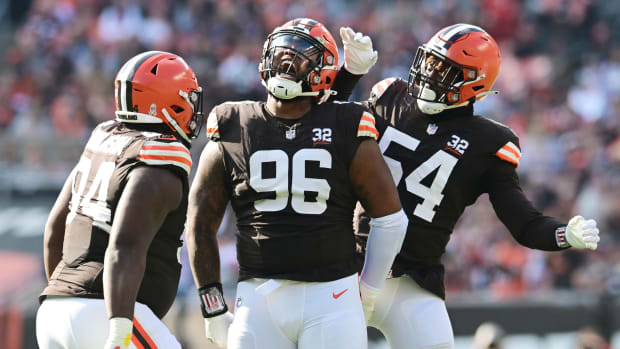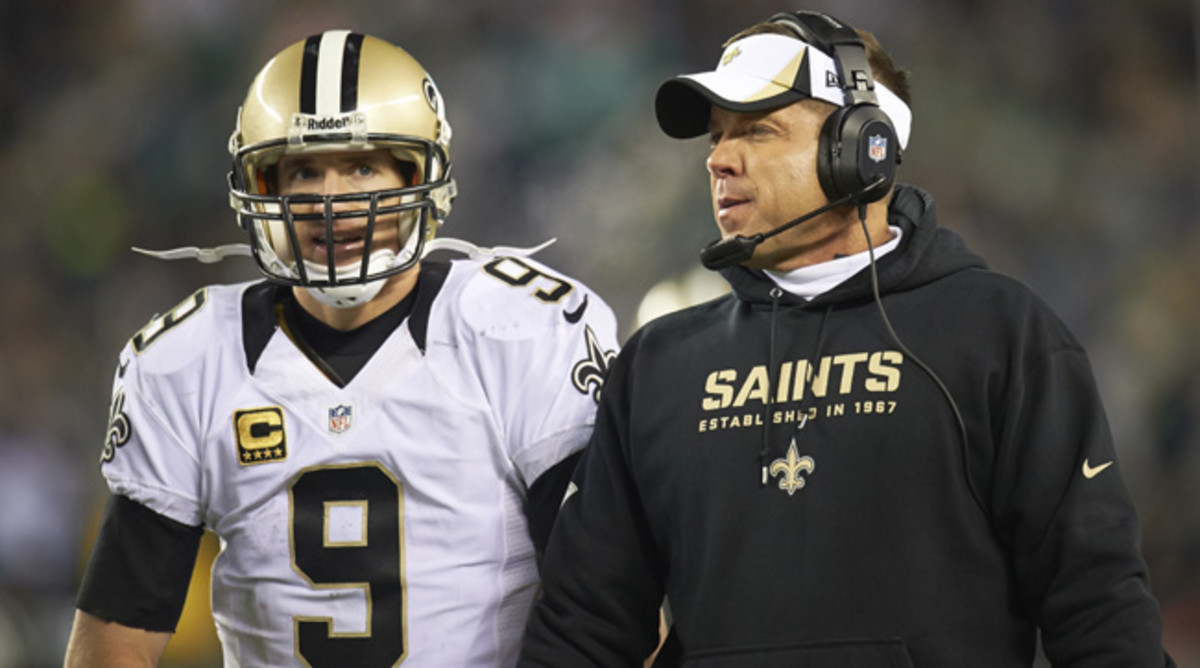
The Evolution of the Saints Passing Game
The Jimmy Graham trade was shocking to many, including Drew Brees. A star playmaker and mismatch creator dealt in his prime? We see that maybe once every five years—and usually with extracurricular circumstance attached (think Terrell Owens, with his bad attitude and weird contract, going from San Francisco to Philadelphia).
But there was nothing sinister behind the scenes with Graham. Saints GM Mickey Loomis was refreshingly honest about why he gave up the three-time Pro Bowl tight end in exchange for Seattle’s first-round pick and two-time Pro Bowl center Max Unger: “We're trying to do some things to help our overall team. And we've been fortunate to have a really good offense for the entire time that Sean Payton’s been our head coach.” The Saints have finished in the league’s top five in offensive yardage in seven of Payton’s eight seasons (that doesn’t include the Bounty Gate suspension year, when they still finished second).
“So we've been able to generate offense throughout that period. And yet our defense has been up and down. So when you look at your team, you’re trying to assess the assets that you have and, ‘How can we help ourselves in areas of weakness?' And sometimes that requires you to take a strength of your team and turn it into something else.”
In other words, as long as Brees is under center and Payton is running his system, the Saints can manufacture offensive production just fine. If, as the GM, you believe this to be true, then your focus shifts from bolstering strengths to eradicating weaknesses. Because after all, the system itself is the strength.
This explains Unger’s presence in the trade. The Saints’ interior offensive line play has been spotty the past few years, particularly at center. That’s a problem because the man executing the system, Brees, is only 6-feet and predicates his game on climbing the pocket. This is why the Saints have always invested heavily at the guard positions. (They did just ship one of those heavily invested guards, Ben Grubbs, to the Chiefs, but they’re banking on addition by subtraction there. Grubbs, 31, was coming off an uncharacteristically bad season in pass protection. His internal replacement, Tim Lelito, is no stud, but he’ll at least be cheaper.)
With Graham gone, the Saints are betting they can create matchup problems through other means. Let’s understand what constitutes a matchup problem. If you have a less experienced quarterback with pocket limitations, your play design needs to create a single glaring mismatch to focus on. That simplifies the game. (Hence Seattle bringing in Graham to pair with Russell Wilson.) But with there being five eligible receivers on every snap, there usually is a “matchup problem” somewhere to exploit. A brilliant, trialed progression read quarterback like Brees doesn’t need it spotlighted to see it. More often than not, Brees can dropback and locate the mismatch naturally.
Graham may have often been the Saints’ most obvious matchup problem, but that doesn’t mean he was the only one. This same thinking is what allowed the Saints to move on from Darren Sproles, another matchup problem, after 2013. And, to a lesser degree, it’s what made them comfortable trading deep threat Kenny Stills to Miami shortly after unloading Graham. None of these moves weaken the system, they just reconfigure the system’s cogs.
Payton’s almighty system thrives on presenting a high volume of formations and personnel packages. Many of them involve only two wideouts, which keeps defenses in their more predictable base packages and affords the Saints the benefit of a run-pass mystery, as well as an expanded play-action game. Once the ball is snapped, the system shrinks. Most of the Saints’ runs are some form of inside zone, featuring powerful double teams at the point of attack. (Hence the selection of 6-7, 313-pound right tackle Andrus Peat in Round 1.) Through the air, the Saints stress defenses with three-level crossing patterns, seam routes and interconnected vertical route combinations.
Graham was a perfect fit for this, which begs the question: Are the Saints truly banking on their system being able to run smoothly per usual? Or, are they actually banking on it evolving into a quicker-passing, more spread-oriented system? One of the best kept secrets in football last season is that Brees, who’s now 36, showed signs of declining arm strength. His deep balls occasionally lost energy towards the end of flight. His zip through tight windows wasn’t always the same. Almost everything the Saints do has focused on pushing the ball downfield between the numbers. Could that be shifting towards more underneath east-west concepts?
Besides Brees, the one offensive player New Orleans made off-limits on the trade market this past offseason was wide receiver Brandin Cooks. The 2014 first-rounder has tremendous speed and lateral quickness. Cooks can be a deep threat Payton’s existing vertical scheme—as long as the designs call for him to run by people rather than outjump them—but he’s a more dynamic threat if he’s using the entire width of the field. Brees has never been a big outside thrower, but he’s proficient throwing on the move. With Cooks, there’s more room for stretch zone action, moving pockets and misdirection.
This style also fits new running back C.J. Spiller, a dangerous space-creator who can also hurt defenses as a receiver. And it fits New Orleans’ revamped O-line: Unger blocked a lot of moving-pocket concepts in Seattle; Peat has light feet for a big man; Terron Armstead might be the best raw moving athlete of all left tackles. Considering that promoted tight ends Josh Hill and Ben Watson don’t run as well as Graham and are best suited for catching balls in the flats, the argument can be made that New Orleans is now better equipped to play horizontally, not vertically.
The argument against this would be the old if it ain’t broke, don’t fix it. That’s fair. Even with Brees’s declining arm, the system isn’t broken. It produced the most yards in the league last year (though only ninth most points). But great systems don’t become great by waiting to adjust after things break. Great systems are built to change smoothly with the times.
• MORE NFC SOUTH DEEP DIVES:THE MAN BEHIND JAMEIS WINSTON: The play-calling of offensive coordinator Dirk Koetter, the biggest assistant coach hiring of 2015, will determine whether Winston sinks or swims. | FALCONS WILL GO AS FAR AS DAN QUINN TAKES THEM: Putting together a winner starts on defense, where the ex-Seahawks coordinator will put a Seattle stamp on the unit.
Saints Nickel Package
1. There is no better illustration of the strength of the Saints’ system than wide receiver Marques Colston’s body of work. A seventh-round pick in 2006, it’s apparent that teams underrated Colston coming out of Hofstra. But 32 teams can’t all be wrong. In a vacuum, Colston has a lot of seventh-round caliber traits (namely, his running, which is measured if not methodical). The Saints almost never ask Colston to split out as a lone receiver and win battles on the perimeter. That’s because they know he can’t. Though roughly the same size, Colston is not Dez Bryant or Julio Jones. What he is, is a really good pass catcher down the seams. When aligned inside, he gets matched against linebackers and safeties—or at worst, backup corners—and wins by snagging tough balls away from his body. Colston is a cog in the Saints’ system, which is why his numbers are relatively the same from year to year.
2. Let’s remember what Loomis said was the main reason for trading Graham: The Saints need to revamp their defense. They have a good coordinator in Rob Ryan, but Ryan’s scheme relies on sound secondary play. Injuries and underachievement hindered the ’14 Saints here. This past offseason, the addition of corner Brandon Browner was a great move; he brings physicality to the boundary and showed in New England that he doesn’t necessarily have to always line up on the defensive right side like he did in Seattle. That’s important because in Keenan Lewis, the Saints have a corner who can travel with opposing No. 1 receivers. Lewis is no Revis, though; he needs safety help against certain guys. Ryan has always been willing to keep two safeties back. The Saints just need those two safeties, Kenny Vaccaro and especially Jairus Byrd, to bounce back from nightmarish seasons.
3. A weakened secondary might explain why the Saints ranked 29th in run defense a year ago (and 31st in yards allowed per carry). Compelled to play safer two-deep coverages, Ryan presented offenses with a lighter box. The Saints’ second level defenders weren’t good enough to handle the extra burden. (And the safeties who were kept back made a habit of missing tackles; New Orleans allowed 35 runs of 15 yards or more, second only to the Giants’ 42.) The hope is the linebacking corps improves with the addition of inside man Dannell Ellerbe and the late first-round selection of Stephone Anthony. They’ll battle for the starting job alongside David Hawthorne, a fast pursuer who understands angles.
4. Junior Galette’s release is damning, both to him and to the team. To him because, well, how bad must his character be if the team was willing to take $18 million in sunk costs to dump him? And we’re talking about a team for which Galette was the only veritable pass rushing threat. Maybe high-effort second-round rookie Hau’oli Kikaha can provide a spark. Even so, Ryan will have to manufacture pressure via blitz—something he’s willing to do, particularly in critical two-minute situations, but isn’t as crazy about as his brother. Blitzing usually means man coverage on the back end. The Saints may have an adequate (okay, barely adequate) slot defender in free-agent pickup Kyle Wilson, but ideally last year’s second-round pick Stanley Jean-Baptiste will earn this job. Even with myriad injuries to guys around him, Jean-Baptiste rarely saw the field as a rookie. The Saints likely aren’t too confident in either him or Wilson. If they were, they wouldn’t have drafted cornerback P.J. Williams in the third round or given meaningful camp snaps to CFL All-Star Delvin Breaux.
5. It was a little surprising to see defensive end Cameron Jordan receive a five-year, $55 million contract given how often he disappeared against the run and pass last year. Jordan’s deal has a $12.8 million cap number and carries $6 million in guarantees in 2016; after that, it can be voided at minimal harm to the team.

































